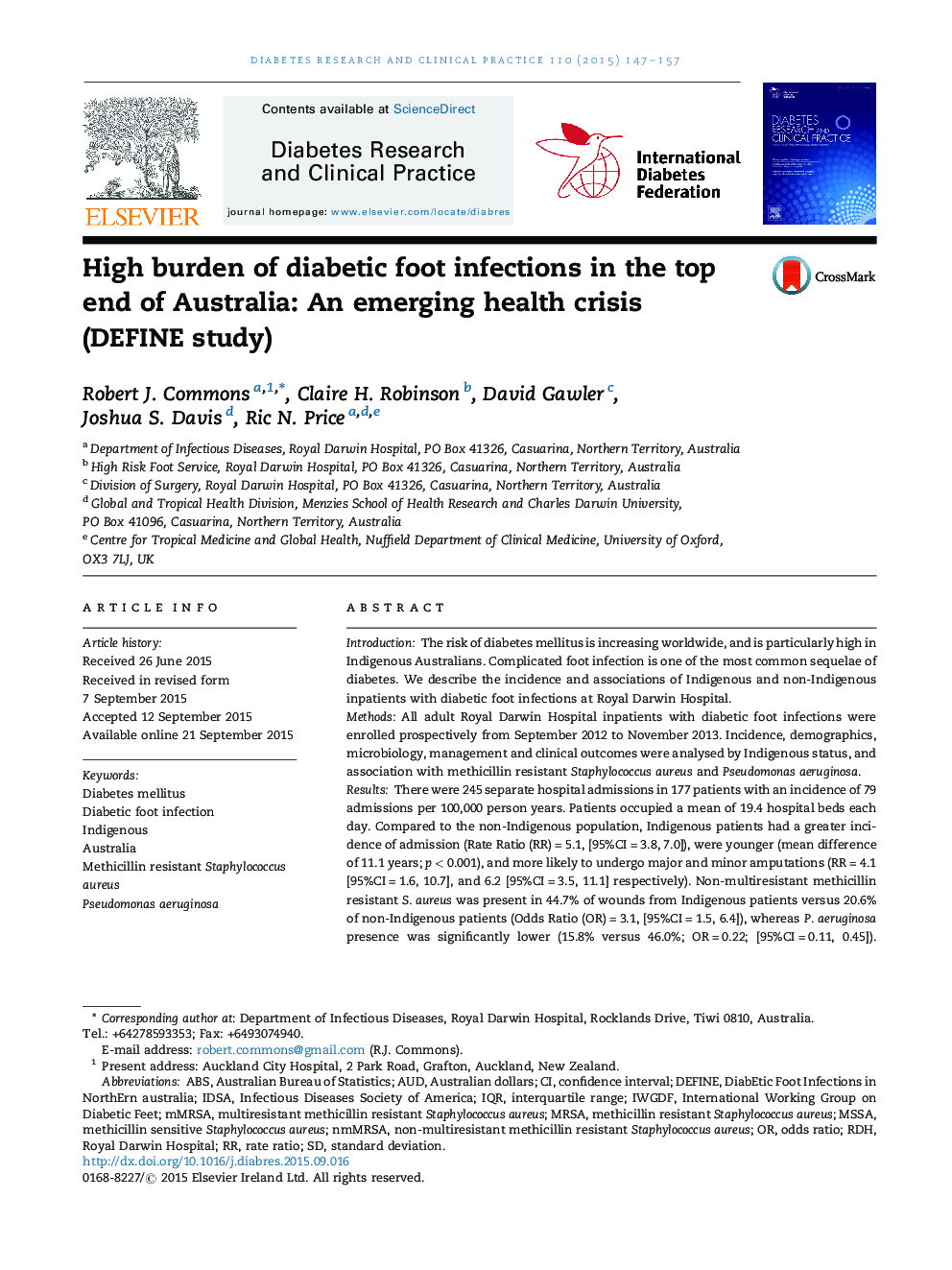| Article ID | Journal | Published Year | Pages | File Type |
|---|---|---|---|---|
| 2796202 | Diabetes Research and Clinical Practice | 2015 | 11 Pages |
IntroductionThe risk of diabetes mellitus is increasing worldwide, and is particularly high in Indigenous Australians. Complicated foot infection is one of the most common sequelae of diabetes. We describe the incidence and associations of Indigenous and non-Indigenous inpatients with diabetic foot infections at Royal Darwin Hospital.MethodsAll adult Royal Darwin Hospital inpatients with diabetic foot infections were enrolled prospectively from September 2012 to November 2013. Incidence, demographics, microbiology, management and clinical outcomes were analysed by Indigenous status, and association with methicillin resistant Staphylococcus aureus and Pseudomonas aeruginosa.ResultsThere were 245 separate hospital admissions in 177 patients with an incidence of 79 admissions per 100,000 person years. Patients occupied a mean of 19.4 hospital beds each day. Compared to the non-Indigenous population, Indigenous patients had a greater incidence of admission (Rate Ratio (RR) = 5.1, [95%CI = 3.8, 7.0]), were younger (mean difference of 11.1 years; p < 0.001), and more likely to undergo major and minor amputations (RR = 4.1 [95%CI = 1.6, 10.7], and 6.2 [95%CI = 3.5, 11.1] respectively). Non-multiresistant methicillin resistant S. aureus was present in 44.7% of wounds from Indigenous patients versus 20.6% of non-Indigenous patients (Odds Ratio (OR) = 3.1, [95%CI = 1.5, 6.4]), whereas P. aeruginosa presence was significantly lower (15.8% versus 46.0%; OR = 0.22; [95%CI = 0.11, 0.45]). Methicillin resistant S. aureus or P. aeruginosa infections were associated with longer antibiotic courses and durations of stay.ConclusionsThis study highlights a rising burden of diabetic foot infections in the Top End of Australia, with a four-fold increase in bed days since 2002 and an overrepresentation in the Indigenous population.
